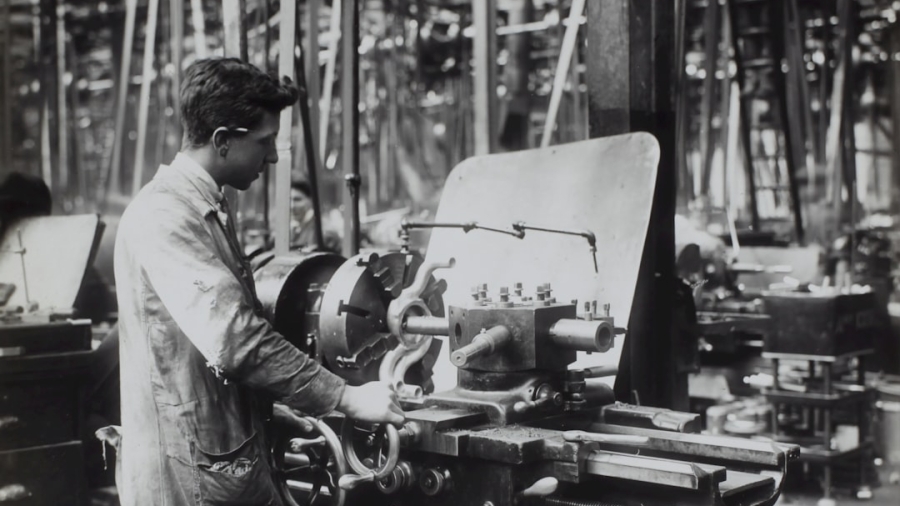Digital twins are advanced technological models that create virtual replicas of physical objects or systems. These dynamic, data-driven representations simulate the behavior, performance, and characteristics of their real-world counterparts. Digital twins are constructed using real-time data, historical information, and sophisticated algorithms, allowing them to adapt and evolve as conditions change.
Originally developed for the manufacturing sector, digital twins have now found applications in various industries, including healthcare, urban planning, and transportation. They provide a comprehensive view of an asset’s lifecycle, enabling organizations to optimize operations, enhance decision-making, and improve overall efficiency. The importance of digital twins extends beyond their ability to mirror physical assets.
They can predict outcomes and facilitate proactive management by leveraging Internet of Things (IoT) technology, sensors, and machine learning. Digital twins continuously collect data from their physical counterparts, creating a real-time feedback loop that allows for early identification of potential issues. Additionally, they can be used for scenario analysis, enabling organizations to simulate various conditions and assess the impact of different variables on performance.
As industries increasingly embrace digital transformation, the adoption of digital twins has become a crucial element in driving innovation and maintaining a competitive edge.
Key Takeaways
- Digital twins are virtual replicas of physical objects, processes, or systems that can be used for analysis, monitoring, and prediction.
- Digital twins play a crucial role in industrial process management by providing real-time insights, optimizing operations, and enabling predictive maintenance.
- Using digital twins in industrial processes can lead to benefits such as improved efficiency, reduced downtime, better decision-making, and cost savings.
- Implementing digital twins in industrial settings involves creating accurate models, integrating data from various sources, and ensuring cybersecurity and data privacy.
- Case studies have shown successful implementation of digital twins in industries such as manufacturing, energy, and transportation, leading to improved performance and operational excellence.
- Challenges and limitations of digital twins in industrial process management include data integration complexities, high initial investment, and the need for skilled personnel.
- The future of digital twins in industrial process management looks promising, with advancements in technology, AI, and IoT leading to more sophisticated and effective digital twin applications.
The Role of Digital Twins in Industrial Process Management
Optimizing Resource Allocation and Reducing Downtime
This level of insight allows managers to make informed decisions based on accurate data rather than relying on intuition or outdated information. As a result, companies can reduce downtime, minimize waste, and improve overall productivity. The integration of digital twins into industrial settings fosters a culture of continuous improvement, where processes are constantly evaluated and refined based on empirical evidence.
Fostering Collaboration and Innovation
Moreover, digital twins facilitate collaboration across various departments within an organization. By providing a shared platform for data visualization and analysis, teams can work together more effectively to address challenges and implement solutions. For instance, engineers can collaborate with production managers to identify design flaws or inefficiencies in the manufacturing process. This cross-functional approach not only enhances problem-solving capabilities but also accelerates innovation by enabling rapid prototyping and testing of new ideas.
Adapting to Changing Market Demands
As industries face increasing pressure to adapt to changing market demands and technological advancements, the role of digital twins in industrial process management becomes increasingly vital. By leveraging digital twins, organizations can stay ahead of the curve and remain competitive in today’s fast-paced industrial landscape.
Benefits of Using Digital Twins in Industrial Processes
The implementation of digital twins in industrial processes offers a multitude of benefits that extend beyond mere operational efficiency. One of the most significant advantages is the ability to enhance predictive maintenance strategies. By continuously monitoring equipment performance and analyzing historical data, digital twins can forecast potential failures before they occur.
This proactive approach minimizes unplanned downtime and reduces maintenance costs, ultimately leading to significant savings for organizations. Additionally, predictive maintenance allows companies to extend the lifespan of their assets by ensuring that they are serviced at optimal intervals based on actual usage rather than arbitrary schedules. Another key benefit of digital twins is their capacity for improved product development and innovation.
By simulating various design scenarios and testing them virtually, organizations can identify the most effective solutions without the need for costly physical prototypes. This capability not only accelerates the product development cycle but also enhances the quality of the final product by allowing for thorough testing under diverse conditions. Furthermore, digital twins enable organizations to gather valuable insights into customer preferences and behaviors through data analysis.
This information can inform future product iterations and help companies stay ahead of market trends, ultimately driving growth and profitability.
Implementing Digital Twins in Industrial Settings
The successful implementation of digital twins in industrial settings requires a strategic approach that encompasses technology integration, workforce training, and change management. Organizations must first assess their existing infrastructure to determine the necessary upgrades or modifications needed to support digital twin technology. This may involve investing in IoT devices, advanced analytics platforms, and cloud computing solutions to facilitate data collection and processing.
Additionally, establishing robust data governance practices is essential to ensure that the information feeding into the digital twin is accurate and reliable. Without high-quality data, the effectiveness of the digital twin diminishes significantly. Equally important is the need for workforce training and development to equip employees with the skills required to leverage digital twin technology effectively.
As organizations transition to more data-driven decision-making processes, employees must be adept at interpreting data insights and utilizing them to inform their actions. This may involve upskilling existing staff or hiring new talent with expertise in data analytics and machine learning. Furthermore, fostering a culture that embraces innovation and change is crucial for overcoming resistance to new technologies.
By clearly communicating the benefits of digital twins and involving employees in the implementation process, organizations can create a sense of ownership that drives successful adoption.
Case Studies of Successful Implementation of Digital Twins
Numerous organizations have successfully harnessed the power of digital twins to transform their operations and achieve remarkable results. One notable example is General Electric (GE), which has integrated digital twin technology across its aviation division. By creating virtual replicas of jet engines, GE can monitor performance in real time and predict maintenance needs with unprecedented accuracy.
This approach has not only reduced maintenance costs but has also improved engine reliability, leading to enhanced customer satisfaction. The success of GE’s digital twin initiative demonstrates how this technology can revolutionize traditional industries by enabling more efficient operations and better service delivery. Another compelling case study is that of Siemens, which has implemented digital twins in its manufacturing processes to optimize production efficiency.
By utilizing virtual models of its production lines, Siemens can simulate various scenarios to identify potential improvements in workflow and resource allocation. This capability has allowed the company to reduce lead times significantly while maintaining high-quality standards. Additionally, Siemens has leveraged digital twins for product development by testing new designs virtually before moving to physical production.
The results have been impressive: faster time-to-market for new products and a marked increase in overall operational agility.
Challenges and Limitations of Digital Twins in Industrial Process Management
Data Collection and Accuracy
Developing a comprehensive digital twin requires extensive data collection from various sources, including sensors, machinery logs, and historical performance records. Ensuring that this data is both accurate and up-to-date can be a daunting task, particularly in large-scale operations with numerous interconnected systems. Inaccurate or incomplete data can lead to flawed simulations and misguided decision-making.
Integration with Existing Systems
Another challenge lies in the integration of digital twin technology with existing systems and processes. Many organizations operate with legacy systems that may not be compatible with modern digital twin solutions. This incompatibility can create silos of information that hinder effective data sharing and collaboration across departments.
Overcoming Resistance to Change
Additionally, there may be resistance from employees who are accustomed to traditional methods of operation and may be hesitant to embrace new technologies. Overcoming these challenges requires a concerted effort from leadership to foster a culture of innovation while providing adequate resources for training and support.
The Future of Digital Twins in Industrial Process Management
Looking ahead, the future of digital twins in industrial process management appears promising as advancements in technology continue to evolve. The integration of artificial intelligence (AI) and machine learning with digital twin models will enhance their predictive capabilities even further. As these technologies mature, organizations will be able to leverage more sophisticated algorithms that analyze vast amounts of data in real time, leading to more accurate forecasts and insights.
This evolution will empower companies to make even more informed decisions regarding maintenance schedules, resource allocation, and process optimization. Moreover, as industries increasingly adopt Industry 4.0 principles—characterized by automation, connectivity, and data exchange—the role of digital twins will become even more central to operational success. The proliferation of IoT devices will facilitate greater data collection from diverse sources, enriching the information available for digital twin simulations.
Additionally, as organizations continue to prioritize sustainability initiatives, digital twins will play a crucial role in optimizing resource usage and minimizing waste throughout production processes. Ultimately, as technology continues to advance and industries adapt to new paradigms, digital twins will remain at the forefront of industrial process management innovation, driving efficiency and fostering growth in an ever-evolving landscape.
For those interested in the intersection of technology and industrial management, the concept of digital twins is revolutionizing how processes are monitored, analyzed, and optimized. If you’re keen on exploring more about how cutting-edge technology is shaping various industries, you might find the article on the best AI video generator software particularly intriguing. This piece delves into the advancements in AI technology that enable the creation of realistic and engaging video content, which is increasingly relevant in a world where digital and virtual representations are becoming crucial in various sectors, including industrial process management.
FAQs
What is a digital twin?
A digital twin is a virtual representation of a physical object or system. It uses real-time data and simulations to mirror the behavior and characteristics of its physical counterpart.
How are digital twins used in industrial process management?
Digital twins are used in industrial process management to monitor, analyze, and optimize the performance of equipment, processes, and systems. They can help in predictive maintenance, process optimization, and simulation of different scenarios.
What are the benefits of using digital twins in industrial process management?
Some benefits of using digital twins in industrial process management include improved operational efficiency, reduced downtime, better decision-making through data-driven insights, and the ability to test and optimize processes without disrupting physical operations.
What industries are using digital twins for industrial process management?
Industries such as manufacturing, energy, healthcare, transportation, and construction are using digital twins for industrial process management. They are also being used in sectors like agriculture, aerospace, and defense.
What technologies are used to create digital twins?
Technologies such as Internet of Things (IoT) sensors, data analytics, artificial intelligence, and cloud computing are used to create and operate digital twins. These technologies enable the collection, analysis, and visualization of real-time data from physical assets.



